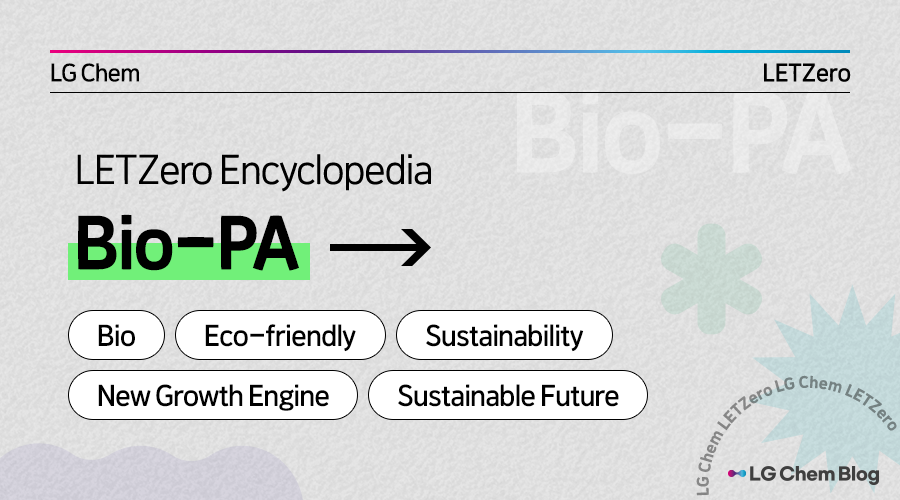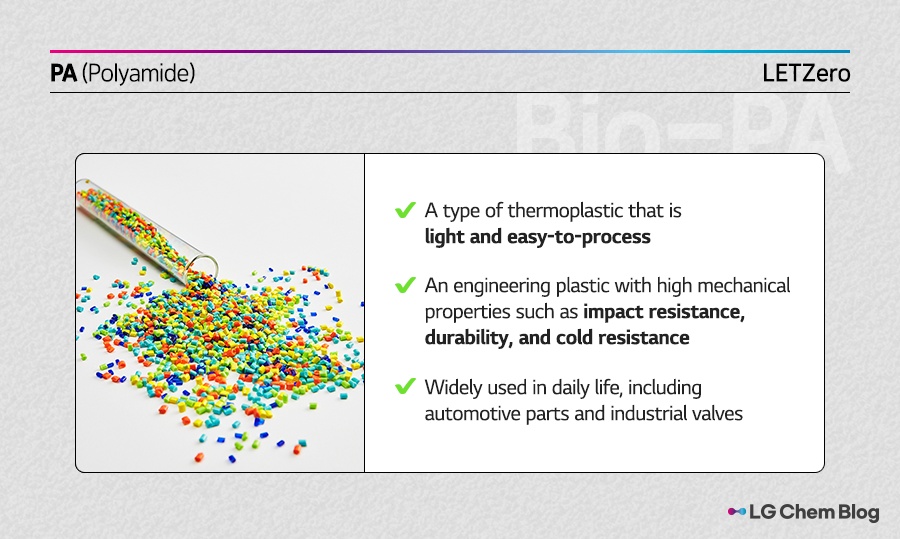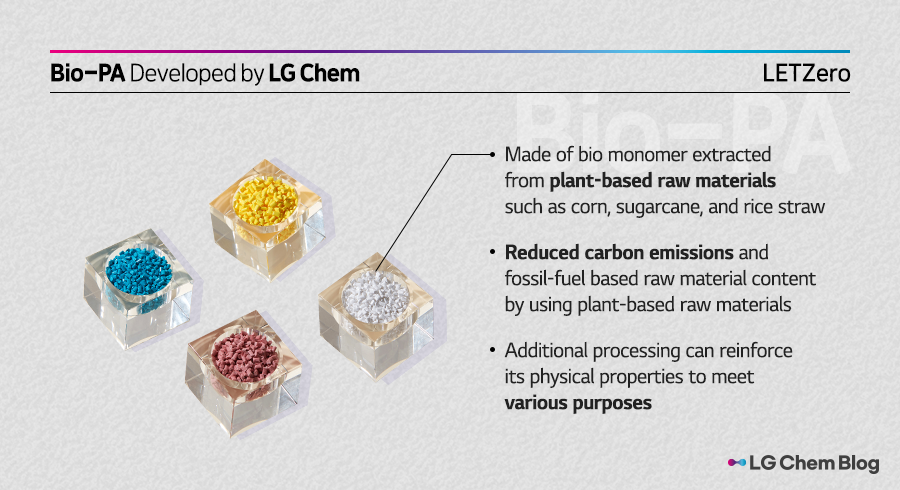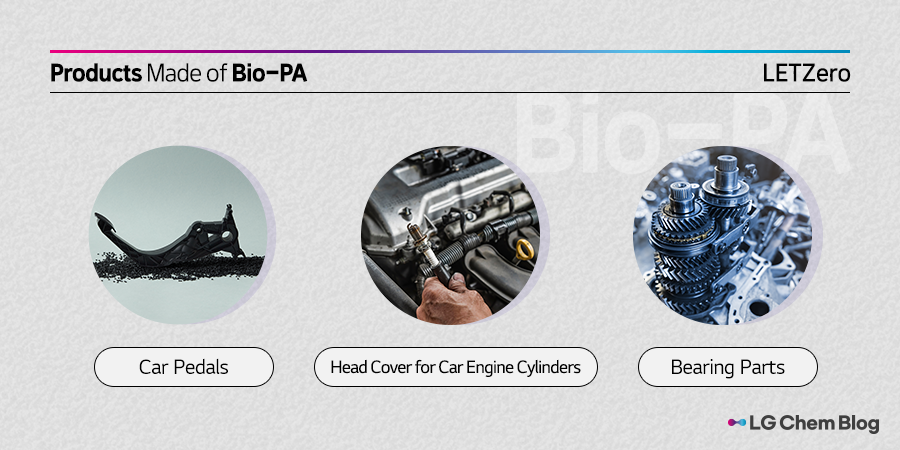LETZero Encyclopedia: Bio-PA – Engineering plastic made from plant-based raw materials!
2024. 02. 14
2024. 02. 14

Welcome to LETZero Encyclopedia, an introductory series to LG Chem’s eco-friendly brand LETZero and its products. Our last episode focused on Bio-Circular Balanced Acrylates, the raw material for acryl, fabric, and paint. Today, we take a look into Bio-PA.
Bio-PA is a Bio-Based plastic which takes plants such as corn, sugarcane, and rice straw as its raw material. By obtaining bio monomer from fermented plants, we can create various types of plastics. Thanks to their contents, Bio-Based materials can cut down the carbon emissions during their production process. Then, what is Bio-PA?

Before we get onto Bio-PA, let’s see what PA (Polyamide) is. PA is a thermoplastic resin, which means we can always reshape its form by applying heat to it. It is an engineering plastic with high solidity and low density. Also, it has excellent impact resistance, durability, and low coefficient of friction (the force that keeps objects from moving against one another). Engineering plastics are known for their lightness and strength, as well as physical properties such as impact resistance, durability, cold resistance, chemical resistance, and electric insulation. They are used in diverse fields, including daily necessities, electronics, and secondary structural materials for aircrafts.
PA is one type of engineering plastic. It serves as a material for automotive parts or industrial valves that require high solidity and heat resistance. Compared to other engineering plastics, PA boasts superior chemical resistance, flame retardancy, and friction/abrasion resistance. It is light and easy-to-process. Plus, it can be processed into composite materials with strong mechanical properties, when blended with inorganic substances like glass fiber.

LG Chem’s Bio-PA is a material which cuts down carbon emissions during its production process. By using bio monomer extracted from plant-based raw materials such as corn, sugarcane, and rice straw, this eco-friendly material effectively reduces the carbon emissions, and has much lower fossil-fuel based raw material content.
LG Chem extracts starch from plant-based raw materials such as corn and sugarcane, which is broken down and fermented to give chemicals like alcohol and amine. By blending these chemicals, we produce Bio-Based raw materials for various plastics. Later, the materials go through additional processing, including compounding, to reinforce their physical properties and be used for various purposes. Bio-PA takes the exact same steps.

LG Chem’s Bio-PA is also known as eco-friendly LUMID*, which boasts excellent mechanical properties such as heat resistance and impact resistance that are comparable to widely-used PA66. Based on these physical properties, Bio-PA goes through additional processing to replace Virgin PA66 parts used in traditional automotive and Electrical and Electronic (E&E) industries. It can be made into various automotive parts, including brake pedals that is closely related to the driver’s safety, an anchorage for spare tires, and head covers for engine cylinders, etc.
*LUMID: An engineering plastic made by compounding PA (Polyamide), a nylon resin, as its base material
So far, we looked at the major characteristics and applications of Bio-PA. The next LETZero Encyclopedia will come back with a story of Bio-Circular Balanced SSBR!

There are no comments yet! Be the first to let us know your thoughts!